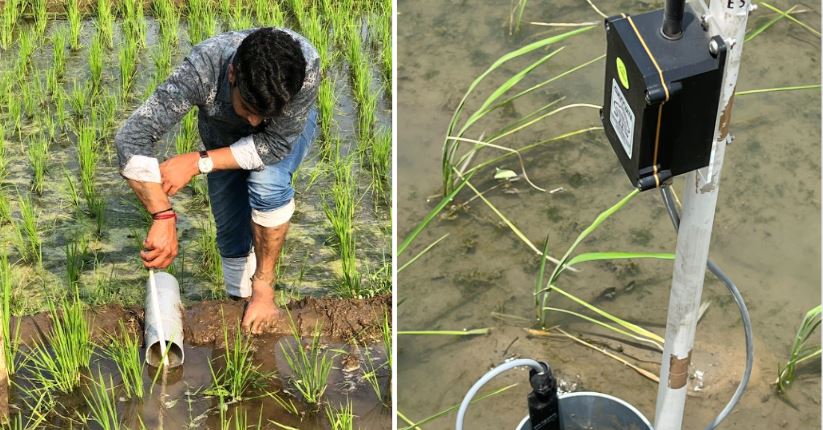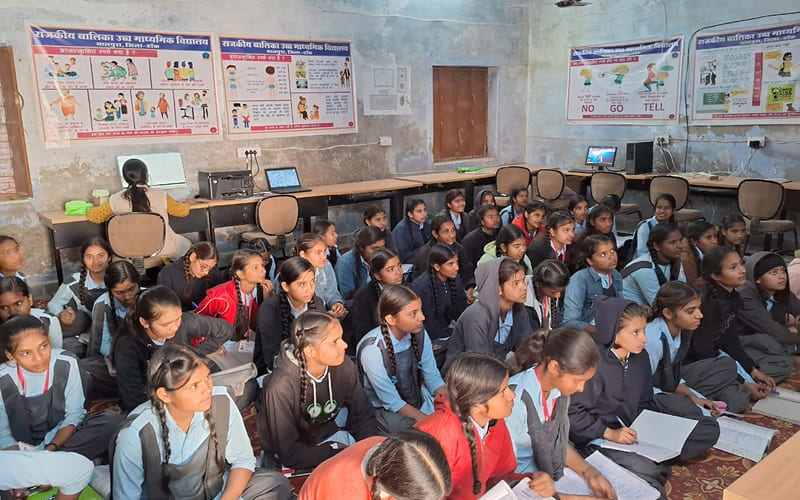
Data-Driven Irrigation in Paddy Cultivation: Cultyvate’s Agritech Model
Bengaluru-based Cultyvate has developed a remote-sensing irrigation system that helps paddy farmers reduce water use by up to 50%. Using soil sensors and AI-powered analytics, the system enables precise irrigation scheduling, improves yields, and promotes sustainable water management in agriculture.
Updated on: 19 June 2025
Impact and Reach
30–50%
water use reduction
20–30%
yield improvement in paddy
Better Fertilizer
retention and energy savings through precision irrigation
Founded in 2016, Cultyvate is a Bengaluru-based agritech startup that addresses one of Indian agriculture’s most urgent challenges: inefficient water use in paddy cultivation. Paddy fields consume over 50% of India’s irrigation water, despite contributing far less to overall agricultural output. Recognizing this inefficiency, Cultyvate developed a remote sensing and data-driven irrigation system to help farmers optimize water usage without compromising crop yields.
The founders, Sreepathy V and Mahendra, leveraged their backgrounds in IT and systems engineering to create a solution rooted in IoT (Internet of Things) infrastructure, backed by AI-enabled decision support. Their primary goal was to reduce over-irrigation, a common practice that depletes groundwater, increases costs, and causes long-term damage to soil health.
Technology that adjusts to agricultural Realities
The Cultyvate system combines soil moisture sensors, flow meters, weather data, and AI algorithms to monitor real-time field conditions. Farmers receive mobile alerts on when and how much to irrigate, based on precise field-level data. This replaces the traditional visual method of flood irrigation, which often results in wastage.
Designed specifically for rural use, the hardware is durable, solar-powered, and capable of functioning without 24/7 internet access. The system is compatible with both manual and motorized irrigation setups. Importantly, farmers do not require literacy or technical expertise to operate it—alerts are sent via voice calls and regional languages.
The approach aligns with growing efforts in Indian agriculture to transition from volume-based to value-based irrigation, focusing on efficiency, sustainability, and resilience to climate variability.
Quantifiable outcomes at the farm level
Cultyvate’s solution has been implemented across several districts in Punjab, Uttar Pradesh, Haryana, Tamil Nadu, Karnataka, Telangana, and Andhra Pradesh. Over 3,500 farmers across 30,000 acres in these regions have benefited from their automated irrigation systems.
Reported outcomes include:
- 30–50% reduction in water usage
- 20–30% improvement in paddy yield
- Energy savings through reduced pump usage
- Lowered fertilizer leaching and better root zone retention
Field trials supported by state agricultural universities and local NGOs have validated these results. The solution has been integrated into government-funded initiatives promoting water conservation and smart farming practices, and Cultybate has also secured a patent for their IoT-enabled AWD solution for paddy farming.
The company operates on a service model, offering subscriptions or project-based deployments in partnership with farmer producer organizations (FPOs) and CSR-backed rural development programs.
Adaptability beyond paddy fields
While originally developed for paddy, Cultyvate’s technology is adaptable to other high-water-demand crops like sugarcane and banana. The modular system can be scaled from single-acre farms to larger cooperative-managed plots. Additionally, its data platform supports seasonal trend analysis, enabling better crop planning and resource allocation.
With India’s growing emphasis on Per Drop More Crop under the Pradhan Mantri Krishi Sinchayee Yojana, technologies like Cultyvate’s are gaining relevance for public-sector adoption. The model offers a viable bridge between traditional practices and sensor-based farming in low-resource settings.
Toward evidence-based agricultural water management
Cultyvate’s work represents a shift toward evidence-driven decision-making in agriculture. Rather than prescribing technology alone, the system empowers farmers with real-time, localized insights into their own land. This has implications not just for farm-level economics, but also for larger goals such as groundwater preservation, energy efficiency, and climate adaptation.
The solution is illustrative of a new class of Indian agritech ventures that merge affordability with high-impact utility. Its implementation offers a replicable template for sustainable agriculture, particularly in regions where water stress intersects with economic vulnerability.
Share Your Story Today, Shape Viksit Bharat Tomorrow
Got an idea, innovation, or experience that's making a difference? Share your story now and ignite India's transformation because your voice can drive the future forward!
BUILD YOUR OWN
BUILD YOUR OWN
How can I implement this innovation effectively?
How is this innovation being adopted around the world?
Where else could this innovation make an impact?
Who has seen real results from using this innovation?
What insights do experts share about this innovation?
What policies support or influence this innovation?
How could this innovation evolve in the future?
Is this innovation accessible and inclusive for everyone?
How can I contribute to or participate in this innovation?
What resources can help me explore this innovation further?
Handpicked stories tailored just for you
Explore stories that inspire, inform, and ignite new ideas across tech, innovation, and real-world impact


Tele-ICU Technology Revolutionizes Critical Care Access Across India
Bengaluru-based Cloudphysician is transforming ICU care with its Tele-ICU platform, connecting hospitals to remote intensive care experts 24/7. Co-founded by...
Read More




